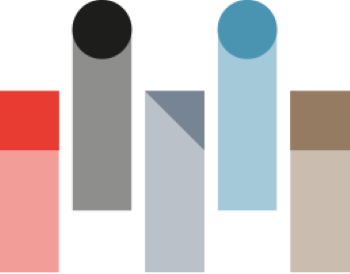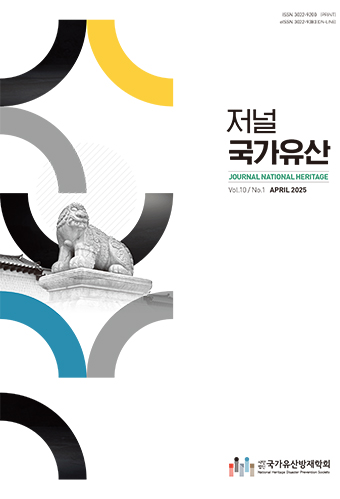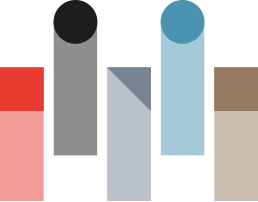Article
Abstract
References
Information
Globally, research on fire weather indices (FWIs) has been conducted to establish fire risk management systems at national or regional scales. In this study, 16 existing FWIs were compared and analyzed, and the five most suitable cases were evaluated to confirm their applicability in Korea. Meteorological factors applied to 16 FWIs collected and surveyed around the world including wind, temperature, relative humidity, effective humidity, precipitation, vapor saturation pressure, potential evapotranspiration, and dew point. The estimated risk levels based on FWI values are generally divided into five grades: As a result of applying five FWIs to Korea’s forest area, Korea’s fire weather risk was found to be 2 to 3 grades lower than in countries where this index was introduced, and the fire season in forest areas was also found to be different. A statistically significant correlation was found between the risk index based on forest fire statistics such as wind speed, relative humidity, and effective humidity and meteorological factors, but temperature did not show a significant correlation.
- Amoriello, T., Costantini, A. (2003). “Meteorological monitoring and climatological trends in Italian forest ecosystems.” Journal of Limnology, Vol.61, pp.93-99. 10.4081/jlimnol.2002.s1.93
- Buchholz, G., Weidemann, D. (2000). “The use of simple Fire Danger Rating System as a tool for early warming in forestry.” International Forest Fire News, Vol.23, pp.32-36.
- Crutzen, P.J., Goldammer, J.G. (eds) (1993). Fire in the Environment: The Ecological, Atmospheric, and Climatic Importance of Vegetation Fires. John Wiley & Sons, Chichester, UK.
- Chladil, M.A., Nunez, M. (1995). “Assessing grassland moisture and biomass in Tasmania: The application of remote sensing and empirical models for a cloudy environment.” International Journal Wildland Fire, Vol.5, No.3, pp.165-171. 10.1071/WF9950165
- Chuvieco, E., Deshayes, M., Stach, N., Cocero, D., Riano, D. (1999). Short-term fire risk: foliage moisture content estimation from satellite data. In: Remote Sensing of Large Wildfires in the European Mediterranean Basin. Chuvieco E. (ed.). Berlin: Springer-Verlag, pp.17-38. 10.1007/978-3-642-60164-4_3
- Glover, D., Jessup, T. (1999). Indonesia’s fires and haze: the costs of a catastrophe. Singapore Institute of Southeast Asian Studies. Singapore. 10.1355/9789812305770
- Groisman, P.Y., Knight, R.W., Easterling, D.R., Levinson, D.H., Heim, R.R., Karl, T.R., Whitfield, P.H., Hegerl, G.C., Razuavaev, V.N., Sherstyukov, B.G., Enloe, J.G., Stroumentova, N.S. (2005a). Changes in precipitation distribution spectra and contemporary warming of the extratropics: implications for intenserainfall, droughts, and potential forest fire danger. Presented at the 16th AMS Conference on Climate Variability and Change, 9-13 January 2005, San Diego.
- Groisman, P.Y., Sherstyukov, B.G., Razuavaev, V.N., Knight, R.W., Enloe, J.G., Stroumentova, N.S., Whitfield, P.H., Forland, E., Hannsen-Bauer, I., Tuomervirta, H., Aleksandersson, H., Mescherskaya, A.V., Karl, T.R. (2005b). Potential forest fire danger over northern Eurasia: Changes during the 20the century. Presented at the Sixth AMS Fire and Forest Meterology Symposium /19th Interior West Fire Council Meeting, 25-57 October 2005, Cammore, Alberta, Canada.
- Groisman, P.Y., Sherstyukov, B.G., Razuvaev, V.N., Knight, R.W., Enloe, J.G., Stroumentova, N.S., Whitfield, P.H., Forland, E., Hannsen-Bauer, I., Tuomervirta, H., Aleksandersson, H., Mescherskaya, A.V., Karl, T.R. (2007). “Potential forest fire danger over northern Eurasia: Changes during the 20the century.” Global and Planetary Change, Vol.56, pp.371-386. 10.1016/j.gloplacha.2006.07.029
- Hardy, C.C., Burgan, R.E. (1999) “Evaluation of NDVI for monitoring live moisture in three vegetation types of the western U.S.” Photogrammetric Engineering and Remote Sensing, Vol.65, pp.603-610.
- Heil, A., Goldammer, J.G. (2001). “Smoke-haze pollution: a review of the 1997 episode in Southeast Asia.” Reg. Environ. Change, Vol.2, pp.24-37. 10.1007/s101130100021
- Sharples, J.J., McRae, R.H.D., Weber, R.O., Gill, A.M. (2009). “A simple index for assessing fuel moisture content.” Environmental Modeling & Software, Vol.24, pp.637-646. 10.1016/j.envsoft.2008.10.012
- Janis, M.J., Johnson, M.B., Fortum, G. (2002). “Near-real time mapping of Keetch-Byram drought index in the south-eastern United States.” International Journal of Wildland Fire, Vol.11, pp.281-289. 10.1071/WF02013
- Keetch, John J., Byram, George (1968). “A drought index for forest fire control.” Res. Paper SE-38. Asheville, NC: U.S. Department of Agriculture, Forest Service, Southeastern Forest Experiment Station. p.32 .
- Keetch, J.J., Byram, G.M. (1968). A Drought Index for Forest Fire Control. USDA Forest Service Research Paper SE-38, p.32.
- Käse, H. (1969). Ein Vorschlag für eine Methode zur Bestimmung und Vorhersage der Waldbrandgefährdung mit Hilfe komplexer Kennziffern. 68. Akademie Verlag Berlin.
- Kasischke, E.S., Stocks, B.J. (Eds) (2000). Fire, Climate Change, and Carbon Cycling in the Boreal Forest. Springer-Verlag, New York. 10.1007/978-0-387-21629-4
- Kim, D., Jo, S., Kim, S., Lee, S. (2020). “A Study on Fire Vulnerability Analysis of Wooden Cultural Property Using Fire Simulation - For Bulguksa Temple -.” Journal of the Society of Cultural Heritage Disaster Prevention, Vol.5, No.3, pp.233-242.
- Kim, D.H. et al. (2022). “Climate Change Responses for Cultural and Natural Heritage of Korea: Status Quo and Challenges.” National Research Institute of Cultural Heritage, ISBN 978-89-299-2628-1 93600, pp.106-121.
- Kunii, O., Kanagawa, S., Yajima, I., Hisamatsu, Y., Yamamura, S., Amagai, T., Ismail, I.T.S. (2002). “The 1997 haze disaster in Indonesia: its air quality and health effects.” Arch. Environ. Health, Vol.57, pp.16-22. 10.1080/0003989020960291212071356
- Korea Forest Service (KFS) (2012). Annual report of Korea Forest Fire Situation in 2012, KFS Annual Report. p.185.
- Won, M.S., Lee, S.Y., Lee, M.B., Ohga, S. (2010). “Development and Application of a Forest Fire Danger Rating System in South Korea.” Journal of the Faculty of Agriculture Kyushu University, Vol.55, No.2, pp.221-229. 10.5109/18833
- McArthur, A.G. (1966). Weather and grassland fire behaviour. Commonwealth of Australia Forest and Timber Bureau, Leaflet Number 100, Canberra, Australian Capital Territory, p.23.
- McArthur A.G. (1967). Fire behaviour in eucalypt forests Commonwealth of Australia Forest and Timber Bureau, Leaflet Number 107, Canberra, Australian Capital Territory, p.25.
- Nesterov, V. (1949). Forest Fires and Methods of Fire Risk Determination. Russian, Moscow: Goslesbumizdat.
- Noble, I.R., Bary, G.A.V., Gill, A.M. (1980). McArthur’s fire-danger meters expressed as quations. Australian Journal of Ec. 10.1111/j.1442-9993.1980.tb01243.x
- Publisher :National Heritage Disaster Prevention Society
- Publisher(Ko) :국가유산방재학회
- Journal Title :Journal of the Society of Cultural Heritage Disaster Prevention
- Journal Title(Ko) :문화재방재학회 논문집
- Volume : 8
- No :3
- Pages :231-242



 Journal National Heritage
Journal National Heritage




